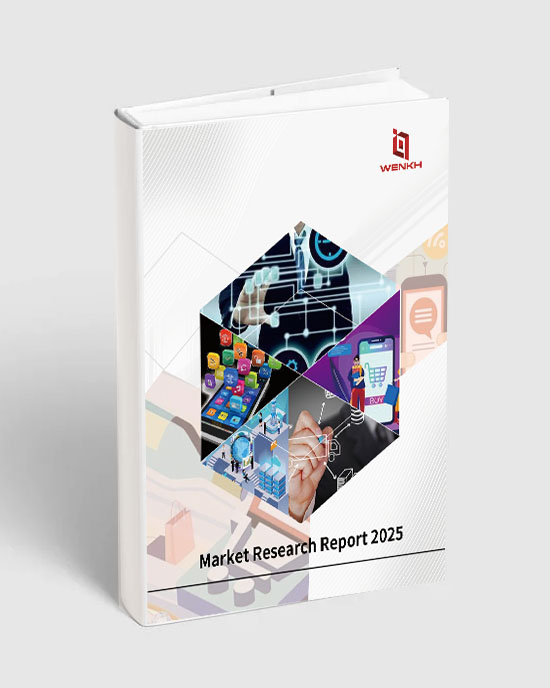
Global AI Accelerator Cards Market Size, Competition Landscape and Supply Chain Research Report 2025



Research Summary
AI accelerator cards are specialized hardware components designed to accelerate artificial intelligence (AI) and machine learning (ML) tasks by performing complex computations much faster than general-purpose processors like CPUs. These cards typically utilize advanced architectures such as Graphics Processing Units (GPUs), Tensor Processing Units (TPUs), or Field-Programmable Gate Arrays (FPGAs), optimized for tasks like deep learning, neural network processing, and large-scale data analysis. By offloading AI workloads from the CPU, AI accelerator cards significantly improve performance and efficiency, enabling faster training of models, real-time inference, and handling of large datasets. They are commonly used in data centers, research labs, and edge computing devices, supporting applications across various industries, including autonomous vehicles, healthcare, finance, and robotics. The integration of AI accelerator cards is key to meeting the growing demands for processing power in AI-driven technologies.
According to WENKH research statistics, the global AI Accelerator Cards market size will reach 106,899 Million USD in 2025 and is projected to reach 2,521,299 Million USD by 2032, with a CAGR of 57.07% (2025-2032). Among them, the Asia-Pacific AI Accelerator Cards market is undergoing rapid changes, reaching Million USD in 2025, accounting for approximately % of the global market share. It is projected to reach Million USD by 2032.
The global AI Accelerator Cards market is highly competitive, with key market players including NVIDIA, AMD, Intel, Huawei, Qualcomm, IBM, Hailo, Denglin Technology, HYGON, Achronix Semiconductor, Shanghai Iluvatar CoreX Semiconductor Co., Ltd., Shanghai Suiyuan Technology Co., Ltd., Kunlunxin, Cambricon Technologies Co., Ltd., Vastai Technologies, Advantech Co., Ltd., etc. This report categorizes the competitive landscape of the global AI Accelerator Cards market into three tiers based on annual revenue, with the top three market players holding approximately % of the total market share.
This report provides an in-depth analysis of the global AI Accelerator Cards market, including market size, price trends, market status and future development prospects. It particularly focuses on the market share, product characteristics, pricing, sales revenue, and gross profit margin of major players in the global AI Accelerator Cards industry. Additionally, this report provides an in-depth analysis of the market status and future development trends of different product segments of AI Accelerator Cards and their downstream application fields.
In terms of data, this report includes a comprehensive time-series dataset. The historical data spans from 2020 to 2024, providing a solid foundation for analyzing past market trends. The year 2025 is used as a base year to accurately assess the current market landscape. Forecast data covers the period from 2026 to 2032, utilizing scientific analysis methods and models to offer forward-looking predictions and insights into the market's future development. This provides valuable reference information for industry participants and stakeholders.
The report covers regions and countries including North America, Europe, China, Asia Pacific (excluding China), Latin America, the Middle East, and Africa. It particularly focuses on the sales revenue of AI Accelerator Cards in these regions and countries, as well as the market share of key market players in each region. The report provides an in-depth analysis of the regional distribution and future development trends of the AI Accelerator Cards market. By considering local policies, this report evaluates the market prospects of AI Accelerator Cards in each region and country, aiming to help companies gain a comprehensive understanding of the industry characteristics and development potential in different regions, optimize regional business layout, and develop precise market strategies to achieve global development goals.
This report places a strong emphasis on data quality and reliability, utilizing diverse and extensive data sources to ensure the accuracy and validity of the information presented. Primary data collection involves multiple channels, including in-depth interviews with senior executives, industry experts, supply chain stakeholders, and end consumers. These interviews provide key insights into corporate strategic planning, industry policy interpretation, supply chain dynamics, and end-user experiences. Secondary data sources cover a wide range of authoritative statistics from government agencies, customs databases, industry associations, third-party paid databases, brokerage research reports, academic research findings, corporate annual reports, financial statements, real-time news updates, and relevant information from international organizations. These data sources serve as a solid foundation for verification and analysis.
Companies Covered
NVIDIA
AMD
Intel
Huawei
Qualcomm
IBM
Hailo
Denglin Technology
HYGON
Achronix Semiconductor
Shanghai Iluvatar CoreX Semiconductor Co., Ltd.
Shanghai Suiyuan Technology Co., Ltd.
Kunlunxin
Cambricon Technologies Co., Ltd.
Vastai Technologies
Advantech Co., Ltd.
Product Segment
GPU
FPGA
ASIC
Product Application
Cloud Deployment
Terminal Deployment
Chapter Scope
Chapter 1: Product Statistical Scope, Product Segmentation Types and Downstream Applications, Overall Market Size, Current Status and Development Prospects
Chapter 2: Global AI Accelerator Cards Industry Chain Analysis
Chapter 3: Global AI Accelerator Cards Industry Environment Analysis and Porter's Five Forces Analysis
Chapter 4: Analysis of the Competitive Landscape of Major Companies in the Global AI Accelerator Cards Market (Market Share, Product Revenue Comparison, Tier Division, Corporate Expansion and M&A Trends)
Chapter 5: Analysis of Global Major Companies (Company Profiles, Product Features and Product Segment, Product Revenue, Product Average Price, Gross Profit Margin and Geographical Sales Share)
Chapter 6: Global AI Accelerator Cards Product Segment and Downstream Application Size Analysis and Major Regional Market Size Analysis
Chapter 7: North America AI Accelerator Cards Product Segment, Downstream Application, and Major Countries Market Size Analysis
Chapter 8: Europe AI Accelerator Cards Product Segment, Downstream Application, and Major Countries Market Size Analysis
Chapter 9: China AI Accelerator Cards Product Segment, Downstream Application, and Major Countries Market Size Analysis
Chapter 10: Asia Pacific (excluding China) AI Accelerator Cards Product Segment, Downstream Application, and Major Countries Market Size Analysis
Chapter 11: Latin America AI Accelerator Cards Product Segment, Downstream Application, and Major Countries Market Size Analysis
Chapter 12: Middle East and Africa AI Accelerator Cards Product Segment, Downstream Application, and Major Countries Market Size Analysis
Chapter 13: Research Conclusion
Chapter 14: Methodology and Data Source
Purpose and Value of the Report
Market Trend Insights: Analyze industry trends, market dynamics, and future growth potential to help companies forecast changes and develop strategic plans.
Competitive Landscape Analysis: Understand key players' revenue segmentation, strategies, market share, and business models to guide competitive decisions.
Investment Decision Support: Provide feasibility analysis through market size, growth rate, demand trends, and potential risks for informed investment decisions.
Target Customer and Demand Analysis: Examine consumer behavior, purchasing preferences, and pain points to optimize products and improve market penetration.
Policy and Regulatory Insights: Interpret relevant industry policies to ensure compliance and mitigate regulatory risks.
Business Model Optimization: Offer data-driven suggestions for enhancing business models and improving profitability.





